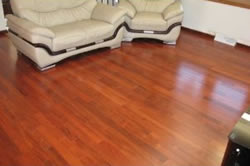
Figure 1 - Wood flooring
Although the most popular types of woods for flooring are the hardwoods, softwood flooring is not uncommon. Today, most flooring comes in planks that have tongues and grooves to fit into one another, making installation easier than ever. As well, current technologies have created finishes that are put on the planks prior to installation. These not only makes installation faster, the finishes are highly durable and fend off many scratches and dents that used to be common on hardwood floors.
Note: You should choose the species of lumber based on its grains and patina. Colors really do not matter anymore, because the wood finishes that are available can accommodate almost any decorating requirement. From natural and light shades to deeper colors of dark browns and blacks.
Wood flooring is also a very environmentally friendly material. It is a renewable resource and can be reused if it is ever removed from the home.
Hardwood Flooring
Although we now have many species of exotic lumber to choose from for hardwood flooring, by far the most common lumbers used grown in North America:
Oak
Oak, as shown in Figure 2, is probably the most common of all lumber species for wood flooring. It is very durable, has strong grain lines that do not splinter and takes colored stains extremely well.
If you are in doubt about the durability of hardwood, take a look at the floor in any gymnasium, it’s generally oak flooring!
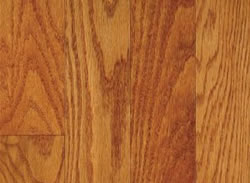
Figure 2 - Red Oak flooring
White Oak has a JANKA rating (the level of hardness) of 1360 and Red Oak has a JANKA rating of 1260.
Maple
Maple, as shown in Figure 3 is a harder lumber than oak and hence will stand-up to more abuse without showing the signs of wear. The grain in maple is softer than that of oak and it can be more difficult to stain. It is a more expensive lumber than oak.
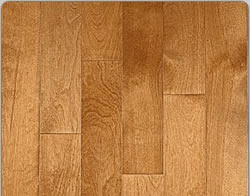
Figure 3 - Maple flooring
The JANKA rating of North American Maple is 1450.
Ash
Ash, as shown in Figure 4, is becoming much more popular as wood flooring because of its price. Personally I do not think that the grain in Ash is as appealing as either of the grains in Oak or Maple.

Figure 4 - Ash flooring
Ash has a JANKA rating of 1320.
Softwood Flooring
Seventy-five years ago softwood flooring was as popular in certain areas of North America as hardwood flooring. The primary reasons were that it was readily available, very easy to cut into planks and to sand in place.
Softwood when used on floors is very suited to a rustic décor. Yellow pine was one of the most common species of lumber used for flooring and it is still very popular today. Softwood flooring is very easy to refinish, if and when it becomes marred and scratched.
The big box home improvement stores, generally do not stock softwood flooring which means that you may have to deal with a specialty flooring center or direct with a mill if it is a softwood flooring material that you want.
The most common softwood flooring lumbers are:
Pine
Pine, as shown in Figure 5, is available with and without knots and many people prefer the knotty pine look when creating a rustic décor. Clear pine is almost as expensive as hardwoods and is primarily used for furniture production. Southern Yellow Pine has a JANKA rating of 690, almost half that of Oak.
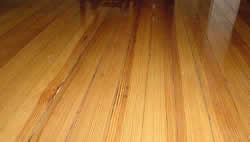
Figure 5 - Pine flooring
Birch
Birch, as shown in Figure 6, is a softwood that is also used for flooring, but, as it is prone to having knot holes its applications are limited. There can also be problems in staining birch with blotch marks due to the sap in the wood not taking stain evenly. Yellow Birch has a JANKA rating of 1260 making it close to the hardness ratings of some of the hardwoods used for flooring.

Figure 6 - Birch flooring
Fir
Fir used to be more common as a flooring material than it is now. It’s only advantage may be its patches of dark grain that does give a somewhat unique appearance to the finished floor. Douglas fir has a JANKA rating of 650, less than southern yellow pine.
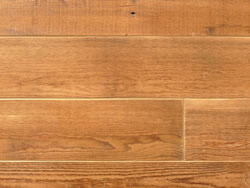
Figure 7 - Fir flooring
Bamboo (Bamboo is not wood)
Although Bamboo is not a wood, it is a grass. Bamboo has very similar qualities to that of lumber. Bamboo, as shown in Figure 8, has become a very popular as a flooring material. It has a very pleasing grain, is very hard Carbonized Bamboo has a JANKA rating of 1120 and Natural Bamboo has a JANKA rating of 1410, making harder than Red or White Oak.
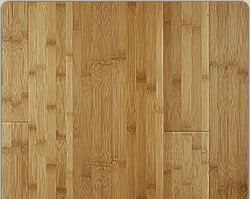
Figure 8 - Bamboo flooring
Additional information on Bamboo flooring
Compare the JANKA ratings of all species of lumber.
Additional information on wood flooring
